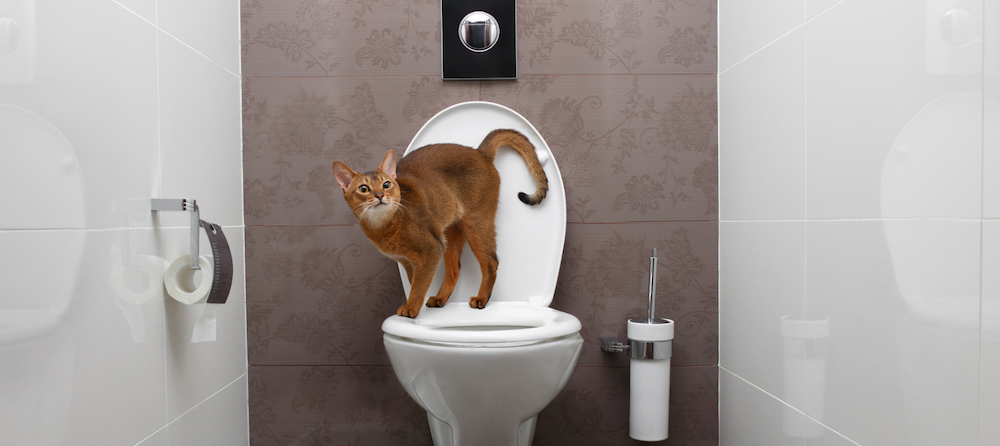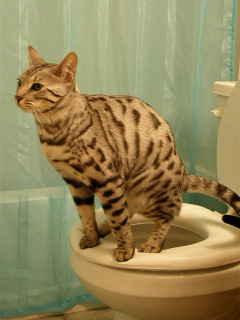Reasons Flushing Cat Poop Down Your Toilet May Cause Problems - Recommendations for Safe Disposal
Reasons Flushing Cat Poop Down Your Toilet May Cause Problems - Recommendations for Safe Disposal
Blog Article
The content below on the subject of Don’t flush cat feces down the toilet is amazingly fascinating. Don't bypass it.

Introduction
As feline owners, it's important to be mindful of just how we throw away our feline buddies' waste. While it might seem practical to flush feline poop down the commode, this method can have destructive consequences for both the setting and human health and wellness.
Ecological Impact
Flushing feline poop presents hazardous virus and parasites into the water, posing a considerable threat to aquatic ecological communities. These contaminants can adversely influence marine life and compromise water high quality.
Wellness Risks
In addition to environmental problems, purging cat waste can additionally pose health and wellness dangers to human beings. Cat feces may include Toxoplasma gondii, a bloodsucker that can create toxoplasmosis-- a possibly severe disease, especially for pregnant women and individuals with weakened body immune systems.
Alternatives to Flushing
The good news is, there are safer and more responsible methods to throw away pet cat poop. Take into consideration the complying with options:
1. Scoop and Dispose in Trash
One of the most typical technique of taking care of pet cat poop is to scoop it into a biodegradable bag and throw it in the garbage. Make certain to use a committed trash inside story and dispose of the waste quickly.
2. Usage Biodegradable Litter
Go with biodegradable feline litter made from products such as corn or wheat. These trashes are environmentally friendly and can be securely gotten rid of in the trash.
3. Hide in the Yard
If you have a yard, take into consideration burying cat waste in an assigned area far from vegetable yards and water sources. Make certain to dig deep sufficient to stop contamination of groundwater.
4. Set Up a Pet Waste Disposal System
Invest in a family pet waste disposal system especially made for pet cat waste. These systems utilize enzymes to break down the waste, reducing odor and environmental influence.
Verdict
Accountable family pet possession expands past giving food and sanctuary-- it likewise entails proper waste management. By refraining from flushing pet cat poop down the commode and opting for alternate disposal approaches, we can decrease our ecological impact and safeguard human health.
Why Can’t I Flush Cat Poop?
It Spreads a Parasite
Cats are frequently infected with a parasite called toxoplasma gondii. The parasite causes an infection called toxoplasmosis. It is usually harmless to cats. The parasite only uses cat poop as a host for its eggs. Otherwise, the cat’s immune system usually keeps the infection at low enough levels to maintain its own health. But it does not stop the develop of eggs. These eggs are tiny and surprisingly tough. They may survive for a year before they begin to grow. But that’s the problem.
Our wastewater system is not designed to deal with toxoplasmosis eggs. Instead, most eggs will flush from your toilet into sewers and wastewater management plants. After the sewage is treated for many other harmful things in it, it is typically released into local rivers, lakes, or oceans. Here, the toxoplasmosis eggs can find new hosts, including starfish, crabs, otters, and many other wildlife. For many, this is a significant risk to their health. Toxoplasmosis can also end up infecting water sources that are important for agriculture, which means our deer, pigs, and sheep can get infected too.
Is There Risk to Humans?
There can be a risk to human life from flushing cat poop down the toilet. If you do so, the parasites from your cat’s poop can end up in shellfish, game animals, or livestock. If this meat is then served raw or undercooked, the people who eat it can get sick.
In fact, according to the CDC, 40 million people in the United States are infected with toxoplasma gondii. They get it from exposure to infected seafood, or from some kind of cat poop contamination, like drinking from a stream that is contaminated or touching anything that has come into contact with cat poop. That includes just cleaning a cat litter box.
Most people who get infected with these parasites will not develop any symptoms. However, for pregnant women or for those with compromised immune systems, the parasite can cause severe health problems.
How to Handle Cat Poop
The best way to handle cat poop is actually to clean the box more often. The eggs that the parasite sheds will not become active until one to five days after the cat poops. That means that if you clean daily, you’re much less likely to come into direct contact with infectious eggs.
That said, always dispose of cat poop in the garbage and not down the toilet. Wash your hands before and after you clean the litter box, and bring the bag of poop right outside to your garbage bins.
https://trenchlesssolutionsusa.com/why-cant-i-flush-cat-poop/

Hopefully you liked our article about Don’t flush cat feces down the toilet. Thanks a ton for finding the time to read through our post. In case you enjoyed our blog posting plz remember to share it. Thanks so much for going through it.
Call Today Report this page